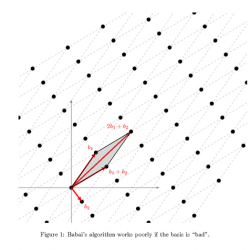Are you a Dot Collector or a Dot Connector?
Connect Dots, Don’t just collect them
 This came up time and again over the weekend as aspiring coaches sat their Level 2 S&C exam on Saturday and when we ran a 3 hour intensive workshop on Athletic Development on Sunday.
This came up time and again over the weekend as aspiring coaches sat their Level 2 S&C exam on Saturday and when we ran a 3 hour intensive workshop on Athletic Development on Sunday.
Anyone can go to a workshop, read a book or watch a YouTube video and get a drill or exercise.
A good coach knows how to assess whether this fits into their System of training, and if so how and when to use it.
This is the difference between just collecting dots and knowing how to connect them.
(Thanks to Seth Godin for analogy)
Lessons learnt in the last year
Sunday saw our first Excelsior intensive workshop for coaches who have attended our Level 1 or Level 2 Strength and Conditioning Courses.
I introduced an overview of Athletic Development and what I have learnt over the last year, especially lessons learnt from GAINV
This included looking at:
- Power development and resistive, spatial and temporal overloads.
- The need for work on Force Reduction, not just Force Production.
- Coaching and how to improve it.
- Nutrition advice for athletes based on real world situations.
This was not a comprehensive review, but more of a stimulus to spark off ideas and thoughts for the coaches.
Agility Principles and Progressions
Having given an overview, I then extrapolated agility and looked at it in much more detail. I explained the three stages:
- Fundamentals
- Motor pattern development
- Autonomics
Each stage has various aspects that need to be included, but none can be addressed if the previous stage is not firm or entrenched.
I spent some time looking at each stage and giving the underlying reasons why each is important and the components of each.
By having a systematic approach to agility the coach can then select the right exercise or drill for the athlete/ team at each stage. Rather than doing STUFF.
We then spent over an hour going through this in practice. I emphasised the need to Coach each aspect, each drill and each player.
A lot of the time I just watch people going through the motions and not trying to get better.
It was good to see the Coaches grasping the concepts and connecting the dots, learning what to look for and how all the activities were inter related.
Community of Practice
We then wrapped up by discussing how we were going to implement and develop the Excelsior community of practice.
A community of practice is just a way of sharing ideas informally, it is free and is a recognised form of learning. A lot of best practices come from informal conversations or “coffee break coaching“.
It was great to see the coaches sharing ideas and information at the end of the day. If anything, it is soemtimes just to know that the problems you have aren’t unique!
Any coach who has completed a level 1 or level 2 course gets free access to specific resources here. We are expanding this into idea sharing and problem solving by using the Google+ community and the workshops to really help each other develop and improve.

Thanks James, glad you liked it. Hopefully you will read the blog more regularly as we have covered this type of thing. Of course doing it in practice and sharing the thoughts are much more beneficial.
It is really good to know that these things are being applied with developing athletes.
The workshop was great, learning and then applying the progressions of agility. Learning more about resistive, temporal and spacial overloads hit the Eureka button with me and I applied this with the Rugby team yesterday. I had my Prop using weighted squats (resistive) due to the nature of his role in the scrum, the flanker squat jumping forwards and diagonally (spatial) as he told me his main role is to react to anyone coming off the back off the opposing scrum and tackling them and my winger performing squat jumps explosively (temporal). One exercise 3 ways of applying it to suit different positions, brilliant!
James cattigan
Level 2 S&C Coach, Sherborne School